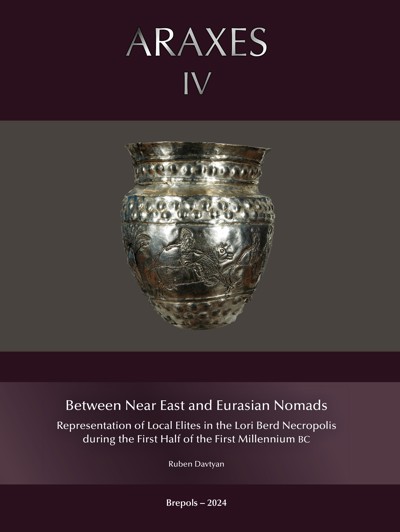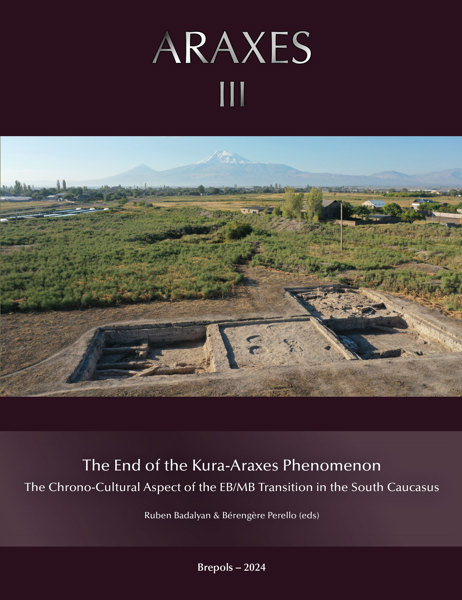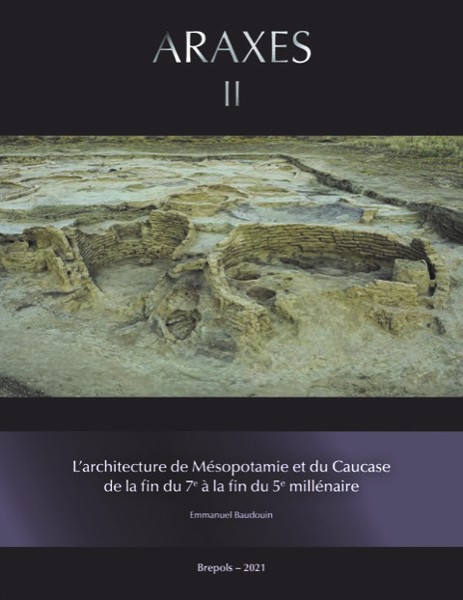
Befund und Historisierung
Dokumentation und ihre Interpretationsspielräume
Sandra Heinsch, Walter Kuntner, Robert Rollinger (eds)
- Pages: xvi + 304 p.
- Size:216 x 280 mm
- Illustrations:161 b/w, 73 col., 8 tables b/w.
- Language(s):German, English
- Publication Year:2021
- € 110,00 EXCL. VAT RETAIL PRICE
- ISBN: 978-2-503-59147-6
- Paperback
- Available
- € 110,00 EXCL. VAT RETAIL PRICE
- ISBN: 978-2-503-59148-3
- E-book
- Available
The contributions focus on the difficult correlation between the political demise of ruling dynasties and the development of material culture in the Ancient Near East during the Iron Age.
Sandra Heinsch is Associate Professor of Near Eastern Archaeology at the Leopold-Franzens University of Innsbruck. Her main research fields are the archaeology of Mesopotamia and Southern Caucasia in the 1st Millennium BCE. She is co-director of the "Armenian-Austrian Aramus Archaeological Project", "The Georgian-Austrian Archaeological Project of Khovle Gora", the "Iranian-Austrian Qara Zia Eddin Archaeological Project" in North-Western Iran and "Borsippa-Project" in Iraq.
Walter Kuntner is Postdoc at the Leopold-Franzens University of Innsbruck. His research area focuses on the archaeology of Upper Mesopotamia and the neighbouring areas as the Southern Caucasus and Anatolia in the 1st Millennium BCE. He is co-director of the "Armenian-Austrian Aramus Archaeological Project", "The Georgian-Austrian Archaeological Project of Khovle Gora" and "Iranian-Austrian Qara Zia Eddin Archaeological Project" in North-Western Iran.
Robert Rollinger is Professor of Ancient History and Ancient Near Eastern Studies at the Leopold-Franzens University of Innsbruck. His main research areas are the history of the Ancient Near East and the Achaemenid Empire, contacts between the Aegean World and the Ancient Near East, ancient historiography, and the comparative history of empires. Recent publications include: Imperien in der Weltgeschichte. Epochenübergreifende und globalhistorische Vergleiche (coedited; 2014); Mesopotamia in the Ancient World. Impact, Continuities, Parallels (coedited; 2015); Alexander und die großen Ströme. Die Flussüberquerungen im Lichte altorientalischer Pioniertechniken (2013); Blackwell Companion to the Achaemenid Persian Empire (coedited; 2020).
Archaeological periodization schemes of material culture development in Northern Mesopotamia from 7th to 5th centuries BCE traditionally refer to the sequence of dynasties. In particular, they highlight historical events related to distinguished members of the royal houses of the Sargonids, Urartians, Medes, Teispids, and Achaemenids. However, whereas the repercussions these Iron Age empires had on the history of the Near East are undeniable, the impact they had on the material culture and its development is not always equally tangible in the archaeological findings. The latter are not infrequently characterized by continuity rather than by incisive changes, as recent studies and re-evaluations of key sites in Syria, Iraq, Iran and Armenia show. This publication uses case studies to address problems that arises when the archaeological (relative concept) and historical (absolute concept) methodology use different intrinsic values of time to reconstruct history and to understand cultural material development.
Archäologische Periodisierungsschemata der materiellen Kulturentwicklung Nordmesopotamiens in der Zeit vom 7. bis 5. Jahrhundert v. Chr. orientieren sich traditionell an historische Zäsuren, die mit der Abfolge von Herrschaftsdynastien wie den Sargoniden, Urartäern, Medern, Teispiden und Achämeniden verbunden sind. Gleichwohl die Bedeutung dieser eisenzeitlichen Herrscherhäuser auf die politische Geschichte Vorderasiens unbestreitbar ist, ist ihr Einfluss auf die materielle Kulturentwicklung nicht im gleichen Maße bestimmbar. Letztere ist nämlich öfter durch Kontinuität als durch einschneidende Veränderungen geprägt, wie rezente Untersuchungen und Neubewertungen wichtiger archäologischer Befunde in Syrien, Irak, Iran und Armenien aufgezeigt haben. Der vorliegende Band weist anhand von Fallbeispielen auf die Problematik hin, die bei abweichenden Bedeutungszuweisungen der Dimension Zeit in archäologischen (relatives Konzept) und historischen (absolutes Konzept) Betrachtungsweisen für die Rekonstruktion der Geschichte und der Entwicklung der materiellen Kultur auftreten können.
Abbildungsverzeichnis
Vorwort
Archäologischer Befund und historische Epochen im Wechselspiel — eine Einleitung — SANDRA HEINSCH, WALTER KUNTNER & ROBERT ROLLINGER
1. Assyrien im Untergang — Das Jahr 614 v. Chr. und der archäologische Befund — PETER A. MIGLUS
2. Die Biographie des Roten Hauses von Tall Šēḫ Ḥamad/Dūr-Katlimmu (Nordostsyrien) und die historische Entwicklung der altorientalischen Reiche in der ersten Hälfte des ersten Jahrtausends v. Chr.: Koinzidenzen und Inkoinzidenzen — FLORIAN JANOSCHA KREPPNER
3. Iron Age Ceramics in Assyria and the Fall of the Assyrian Empire — ARNULF HAUSLEITER
4. Some General Considerations on Assyria and North Western Iran from a Historical Perspective — GIOVANNI-BATTISTA LANFRANCHI & ROBERT ROLLINGER
5. Hasanlu VI–IV: Overview and Recent Revisions — MICHAEL D. DANTI
6. Hasanlu III und die stratigraphische Evidenz der Triangle Ware — STEPHAN KROLL
7. Die eisenzeitliche Keramikentwicklung in Iranisch Aserbaidschan: Der Befund vom Zendān-e Soleimān — JUDITH THOMALSKY
8. Urarṭu und der Raum zwischen Kaukasus, Urmia-See und Kaspischem Meer aus historischer Sicht — MIRJO SALVINI
9. Lchashen-Metsamor V–VI: The Impact of Local and Urartian Ceramics in Iron Age Armenia — HAYK AVETISYAN, PAVEL AVETISYAN, KNARIK NAVASARDYAN† & ARSEN BOBOKHYAN
10. Der Untergang Urartus aus Sicht der „Festung von Aramus" — WALTER KUNTNER & SANDRA HEINSCH
11. Results and Prospects of the New Researches for the Erebuni Monument — FELIX TER-MARTIROSOV†
12. Transkaukasien nach dem Fall Urartus — FLORIAN S. KNAUSS
13. Fortleben und Rückgriff in der Kunst nach dem Untergang des urartäischen Reichs — das Beispiel der Blechvotive — URSULA SEIDL
Tafeln/Plates
Index




